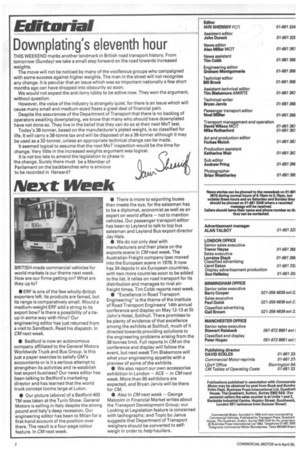Downplating's eleventh hour
Page 4

If you've noticed an error in this article please click here to report it so we can fix it.
THIS WEEKEND marks another landmark in British road transport history. From tomorrow (Sunday) we take a small step forward on the road towards increased weights.
The move will not be noticed by many of the vociferous groups who campaigned with some success against higher weights. The man in the street will not recognise any change. It is peculiar that an issue which was so important nationally a few short months ago can have dropped into obscurity so soon.
We would not expect the anti-lorry lobby to be active now. They won the argument, without question.
However, the voice of the industry is strangely quiet, for there is an issue which will cause many small and medium-sized fleets a great deal of financial pain.
Despite the assurances of the Department of Transport that there is no backlog of operators awaiting downplating, we know that many who should have downplated have not done so. They live in the belief that they can do so at their next MoT test.
Today's 38-tonnerr, based on the manufacturer's plated weight, is so classified for life. It will carry a 38-tonne tax and will be disposed of as a 38-tonner although it may be used as a 32-tonner, unless an appropriate technical change can be made.
It seemed logical to assume that the next MoT inspection would be the time for change. Very little in the increased weights argument was logical.
It is not too late to amend the legislation to phase in the change. Surely there must be a Member of Parliament on the backbenches who is anxious to be recorded in Hansard?




































































































